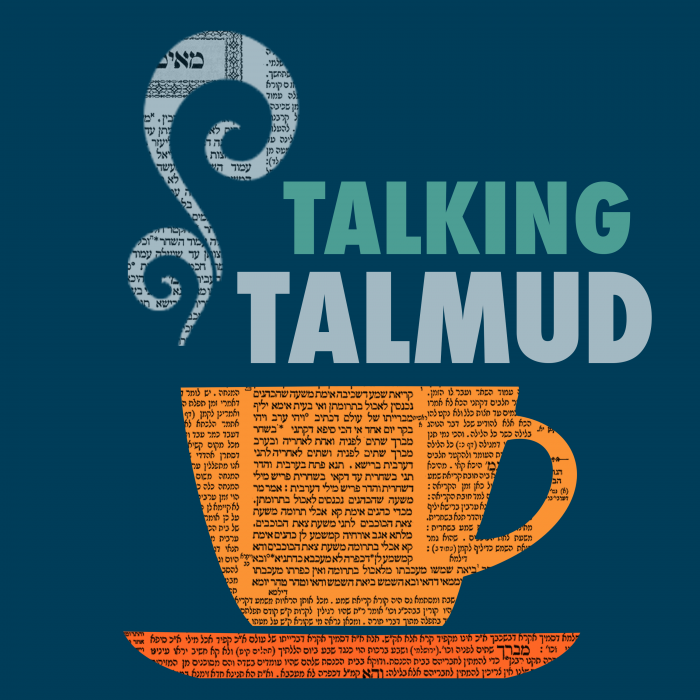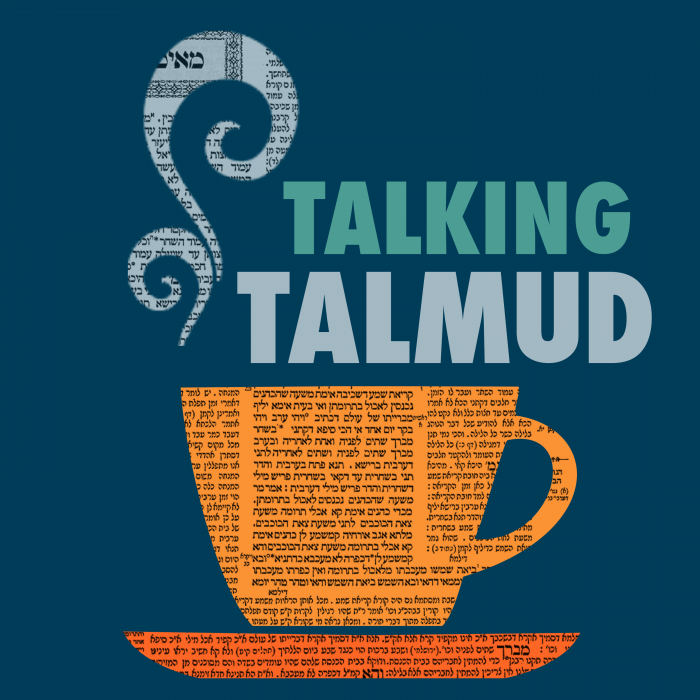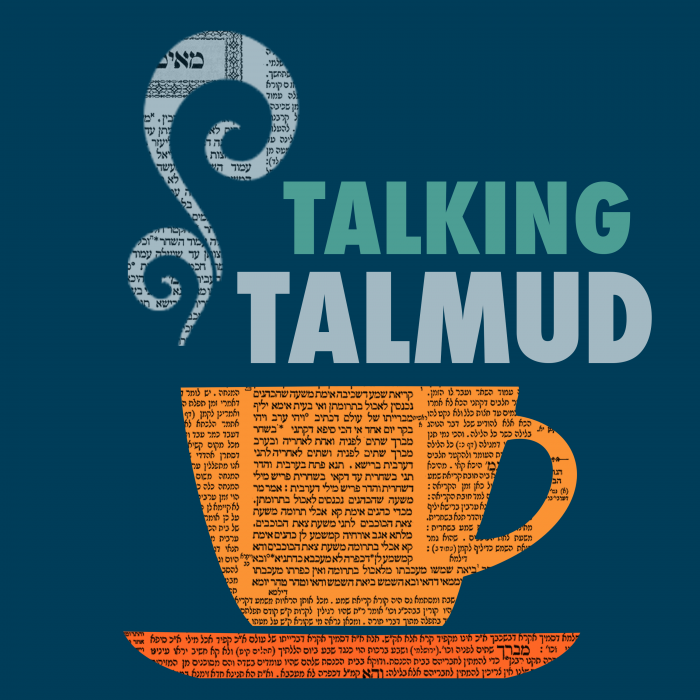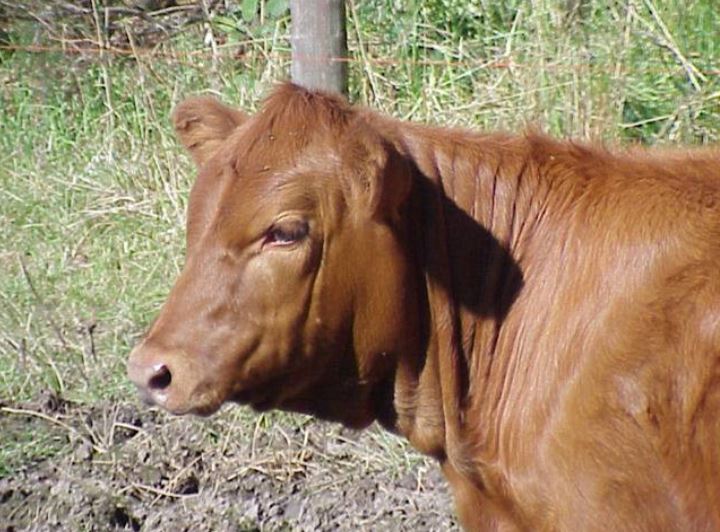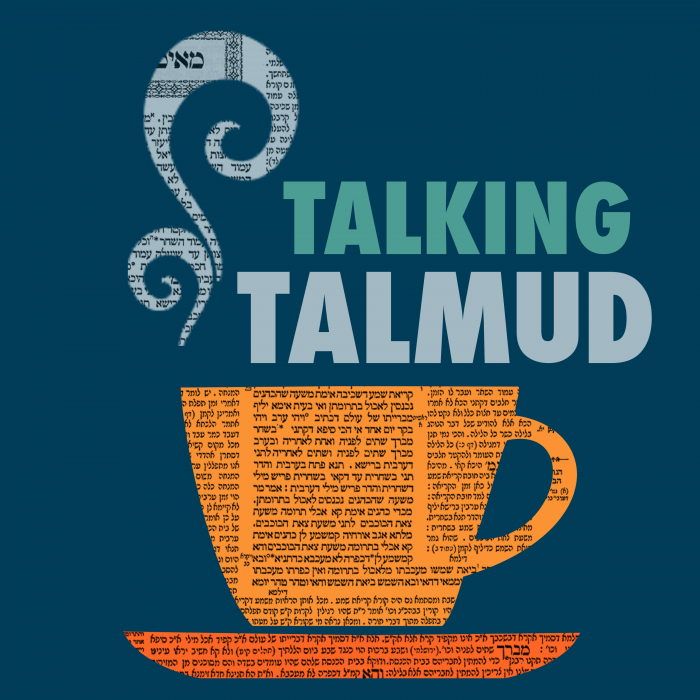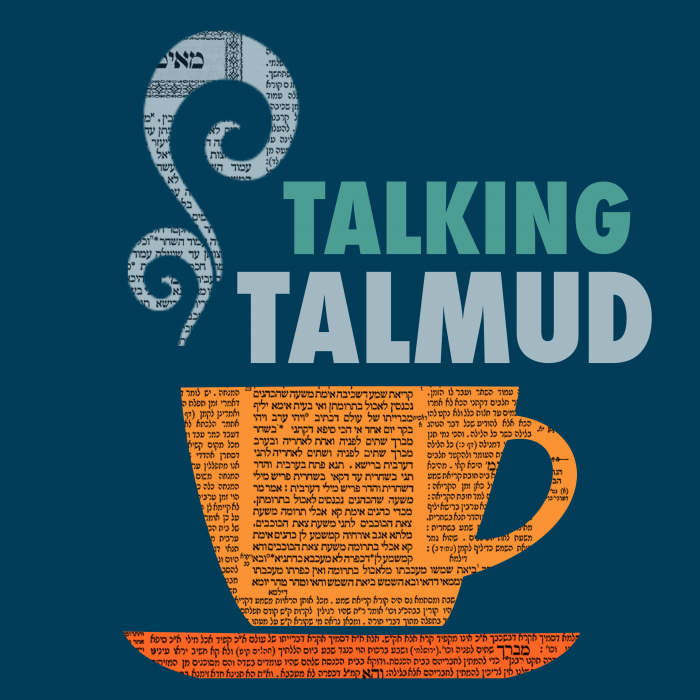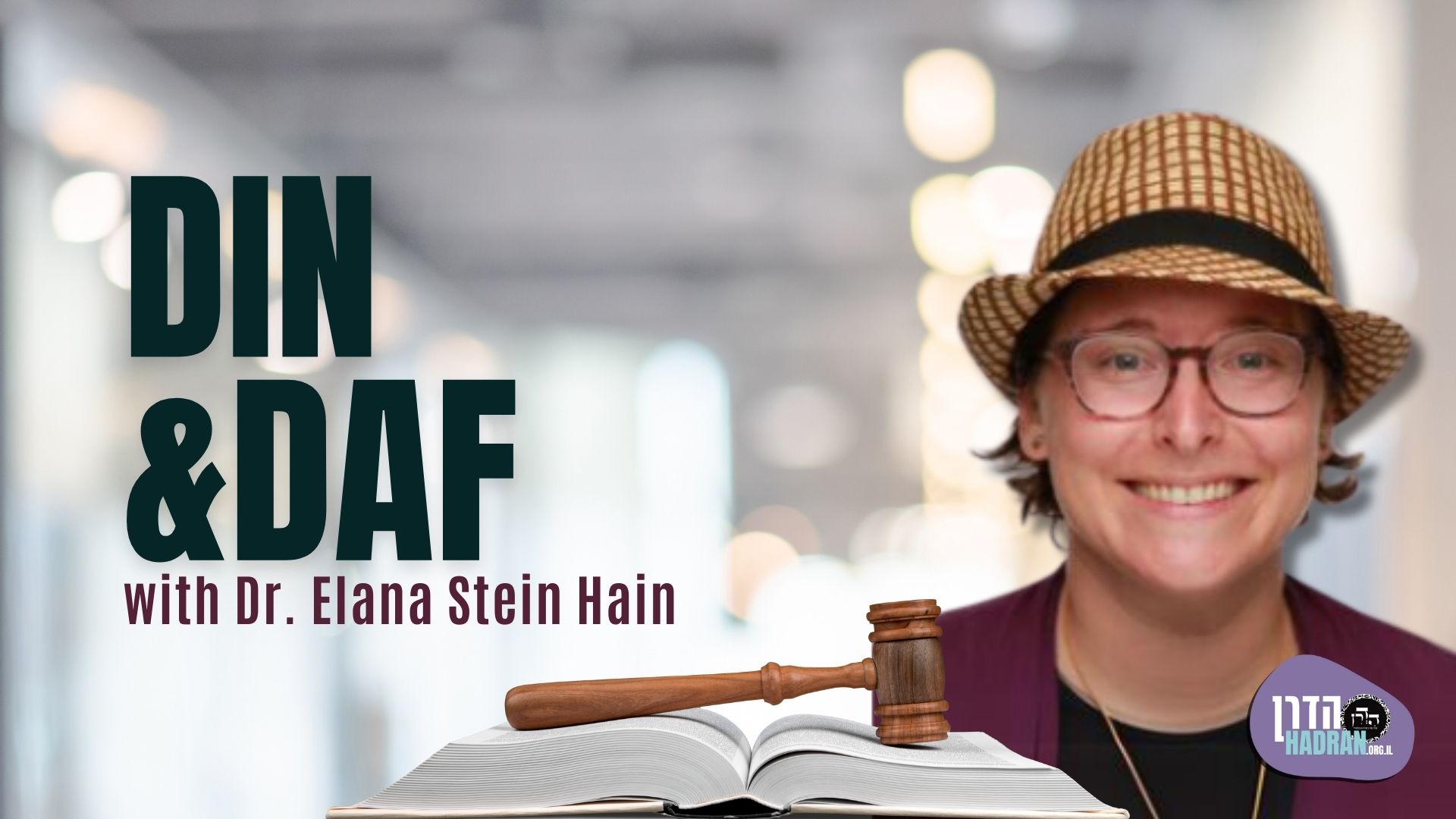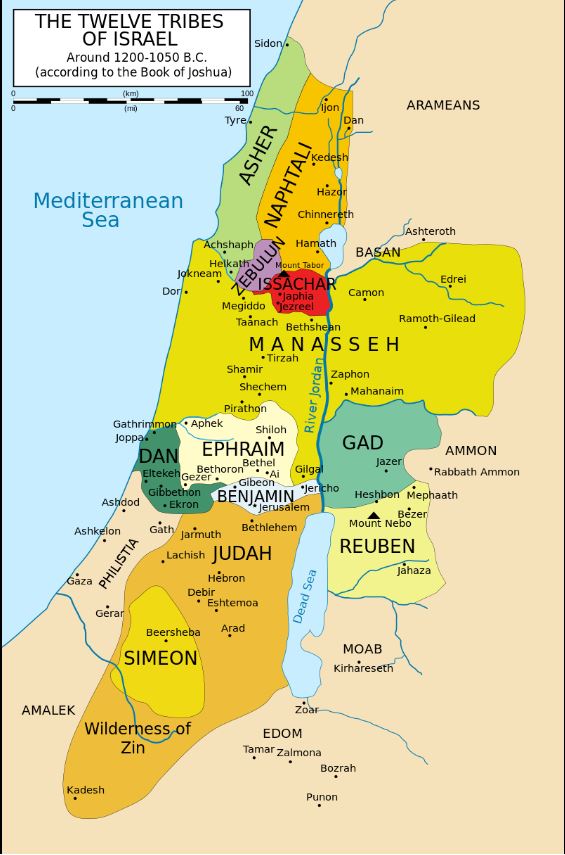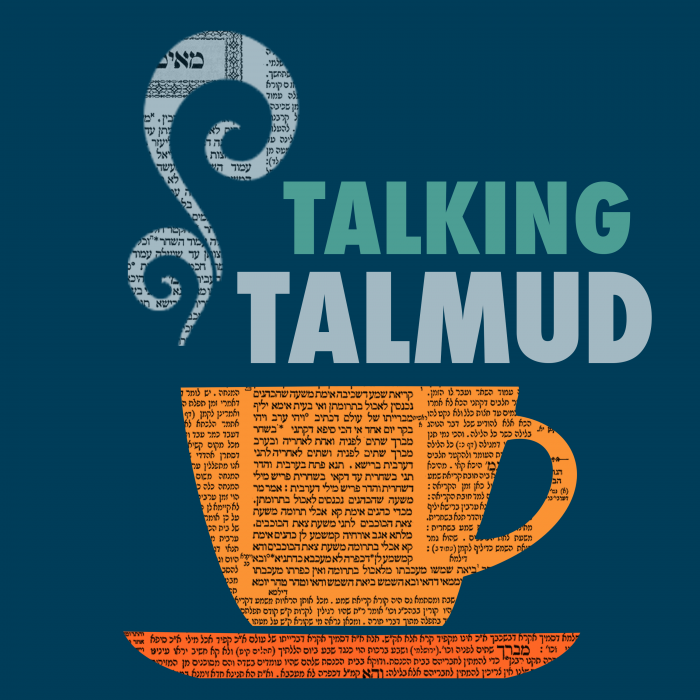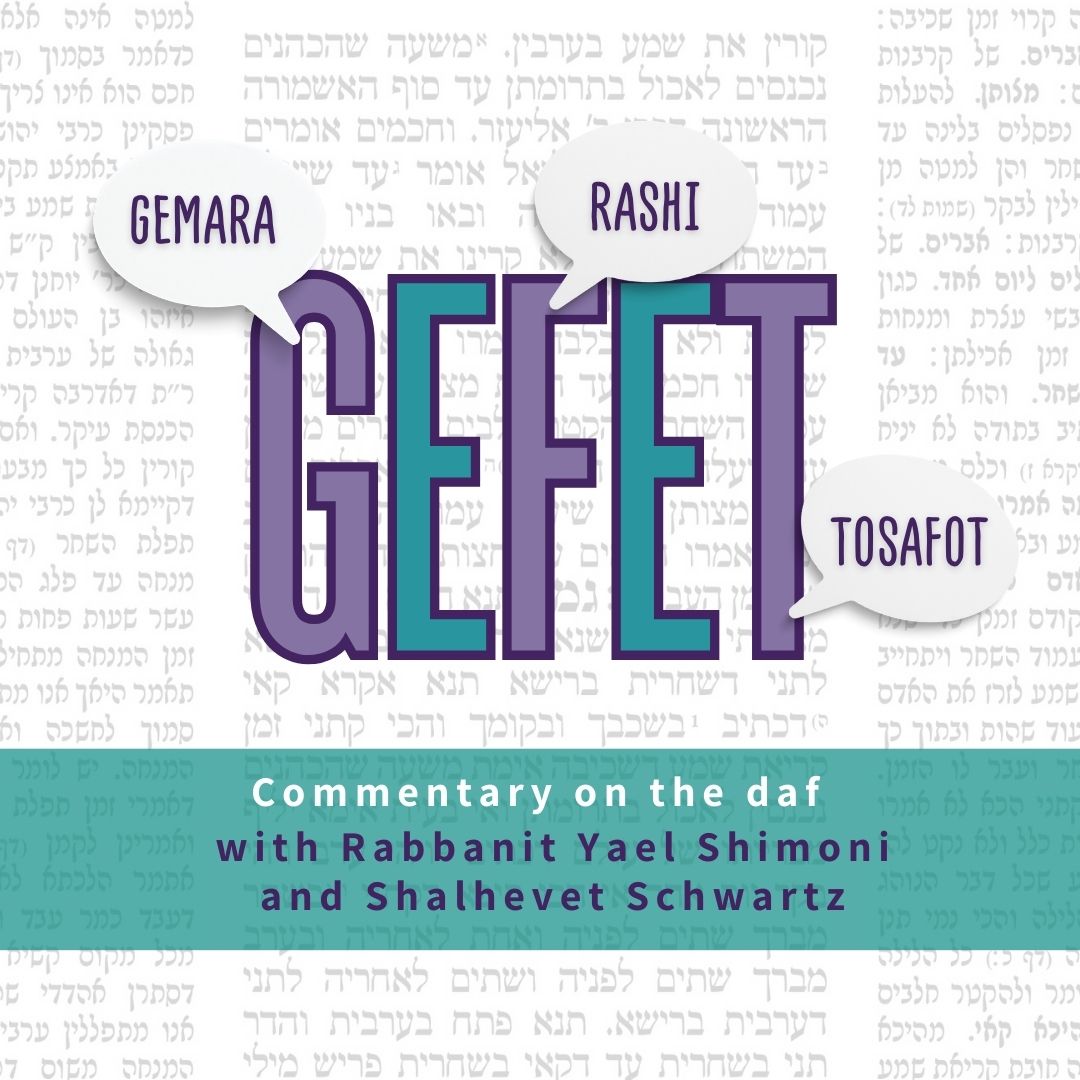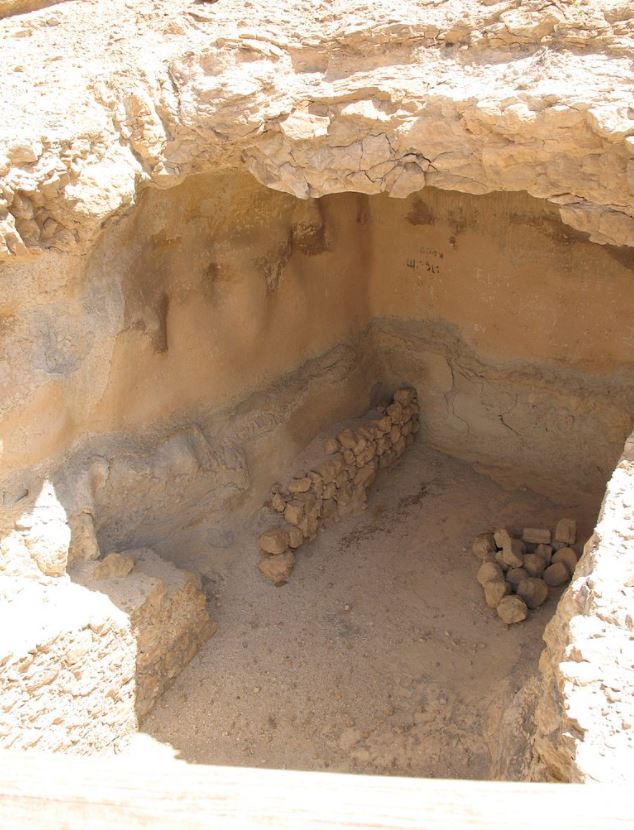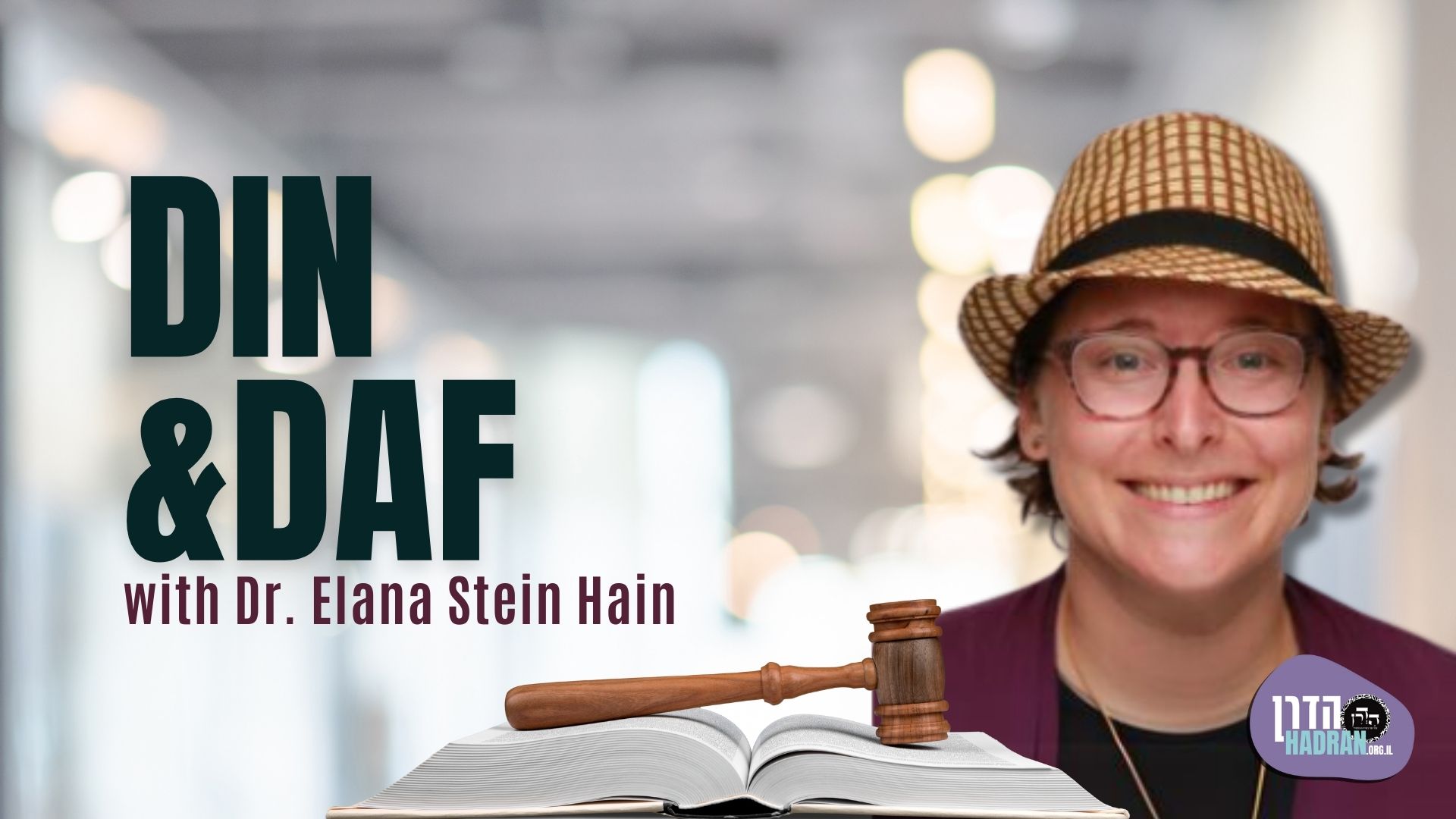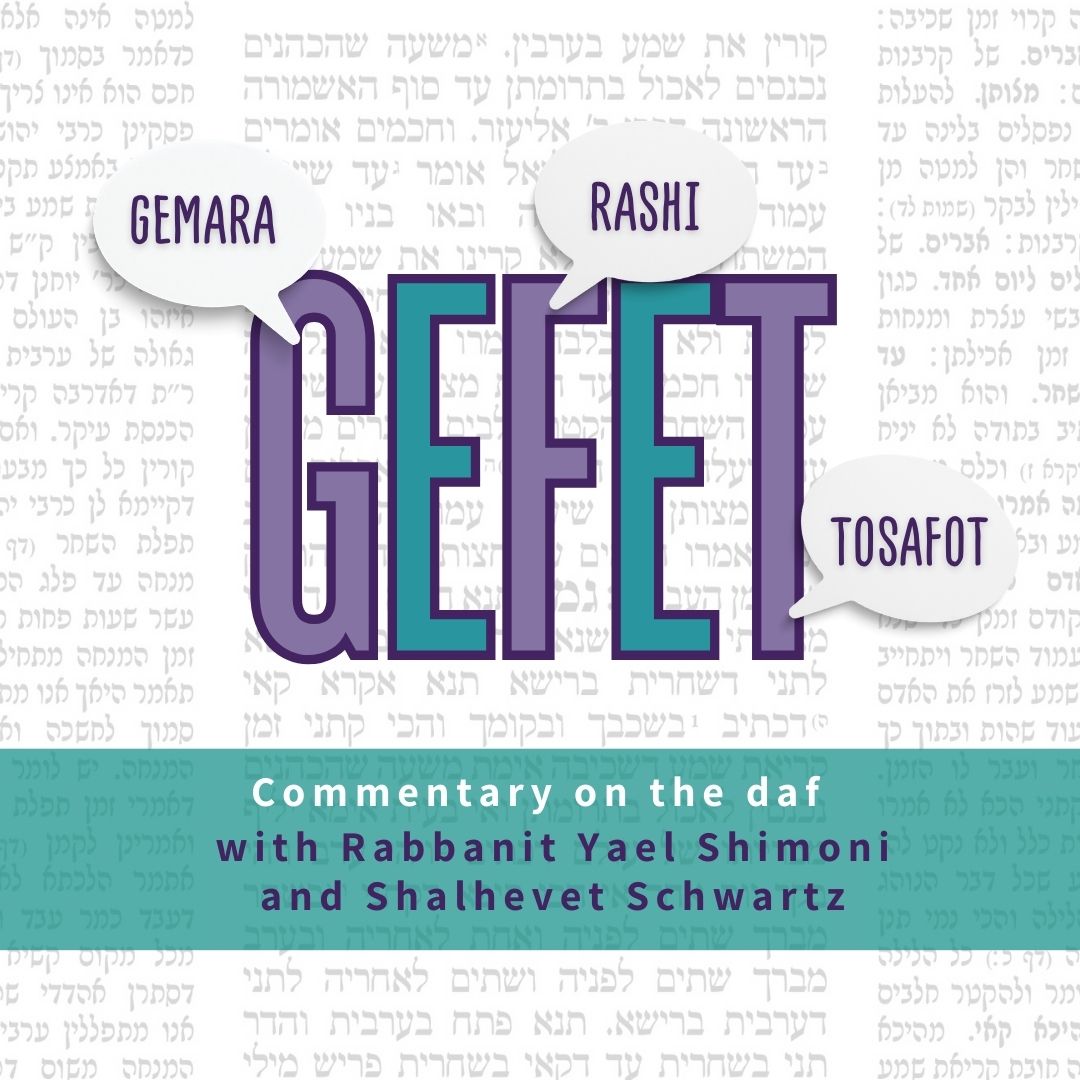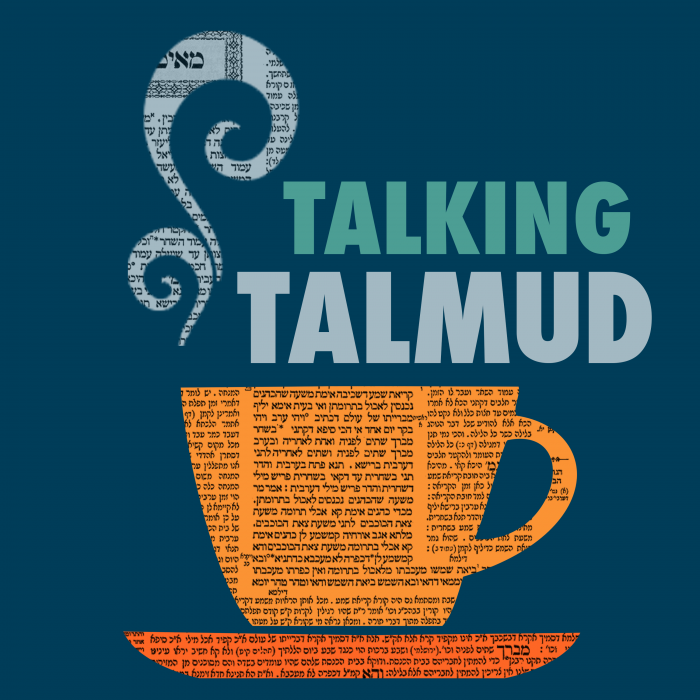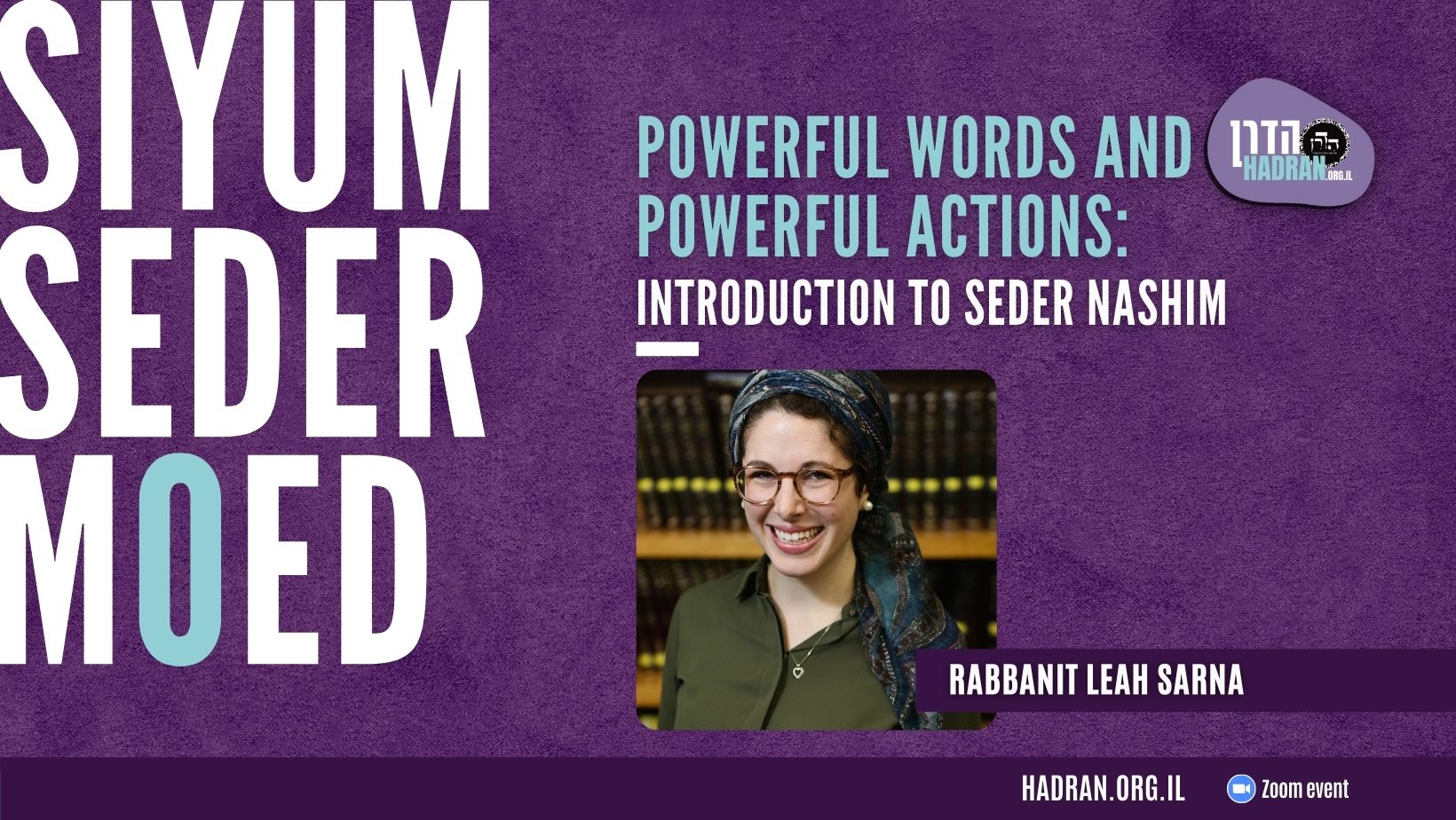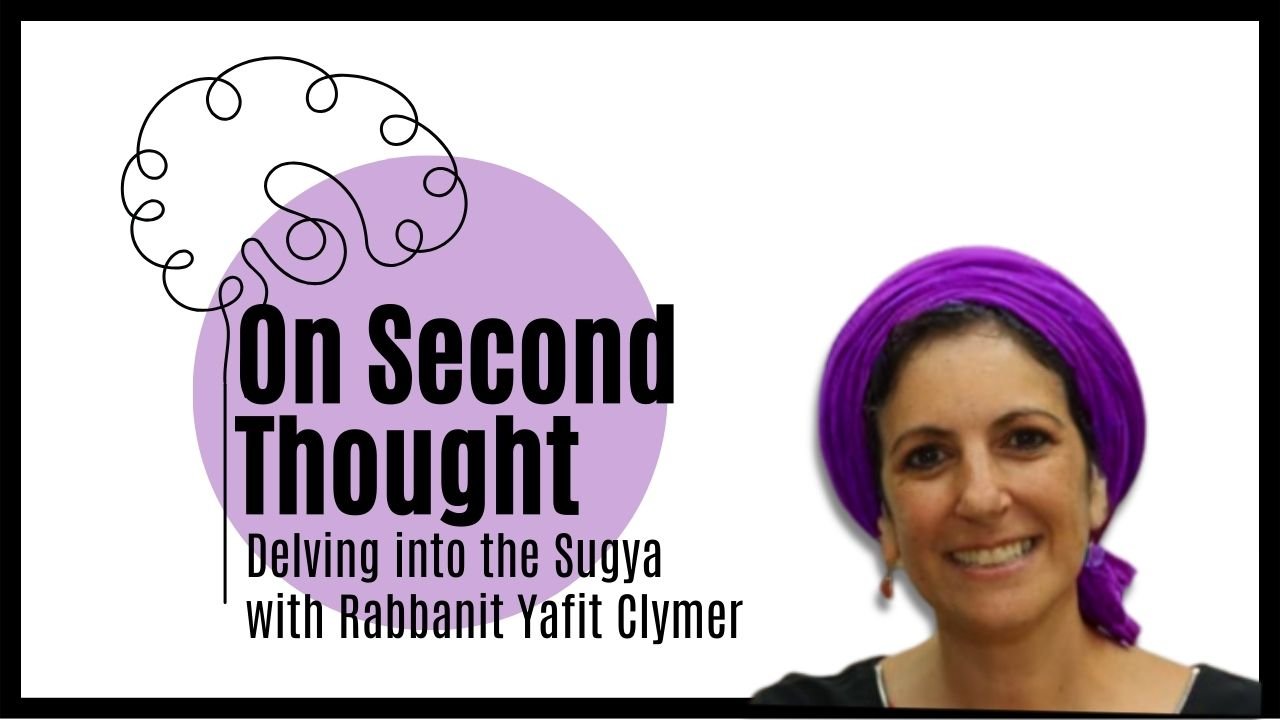What animal are a particular distance from one another, they cannot be counted together for animal tithes. What is that distance? Is there a way to join animals that are far apart? Rabbi Meir rules that if animals are on opposite sides of the Jordan River, they cannot be counted together. Two explanations are brought and the gemara usses each opinion. What is the source of the Jordan? The gemara explains the the Euphrates is the source of all water in the world. There is a debate regarding the Euphrates whether it is filled by rainwater or by its own springs. This is relevant for laws of mikveh in the winter months.
This week’s learning is sponsored by Robert and Paula Cohen in loving memory of Joseph Cohen, Yosef ben Moshe HaCohen, z”l. “He was hard working, loved to sing, esp. as a chazan, and was very dedicated to his family and community.”
Want to dedicate learning? Get started here:


Today’s daily daf tools:
This week’s learning is sponsored by Robert and Paula Cohen in loving memory of Joseph Cohen, Yosef ben Moshe HaCohen, z”l. “He was hard working, loved to sing, esp. as a chazan, and was very dedicated to his family and community.”
Today’s daily daf tools:
Delve Deeper
Broaden your understanding of the topics on this daf with classes and podcasts from top women Talmud scholars.
New to Talmud?
Check out our resources designed to help you navigate a page of Talmud – and study at the pace, level and style that fits you.
The Hadran Women’s Tapestry
Meet the diverse women learning Gemara at Hadran and hear their stories.
Bekhorot 55
מֵיתִיבִי: הָיָה לוֹ חָמֵשׁ בִּכְפַר חֲנַנְיָה וְחָמֵשׁ בִּכְפַר עוֹתְנַי — אֵין מִצְטָרְפוֹת עַד שֶׁיְּהֵא לוֹ אַחַת בְּצִיפּוֹרִי. תְּיוּבְתָּא דְּרַב!
The Gemara raises an objection to the opinion of Rav from a baraita: If one had five sheep in the village of Ḥananya and five sheep in the village of Otnai, which is a distance of thirty-two mil from the village of Ḥananya, they do not combine, unless he also has one sheep between them, in Tzippori. This is apparently a conclusive refutation of the opinion of Rav that there must be at least five sheep in the middle.
תַּרְגְּמַהּ שְׁמוּאֵל אַלִּיבָּא דְּרַב: כְּגוֹן שֶׁהָיוּ תֵּשַׁע מִכָּאן וְתֵשַׁע מִכָּאן וְאַחַת בָּאֶמְצַע, דְּהַהִיא חַזְיָא לְהָכָא וְחַזְיָא לְהָכָא.
Shmuel interpreted the baraita in accordance with the opinion of Rav. The baraita does not mean he had five sheep on either side, but rather it is referring to a case where he had nine sheep from here and nine sheep from there and one in the middle. This case is different, as that one sheep in the middle is fit to combine with the animals here and is fit to combine with the animals there, to constitute a total of ten animals on either side, to which the obligation applies.
אָמַר רַב פָּפָּא: וְלִשְׁמוּאֵל, אֲפִילּוּ רוֹעֶה מְצָרְפָן, וַאֲפִילּוּ כִּלְיוֹ שֶׁל רוֹעֶה מְצָרְפָן.
Rav Pappa says: And according to the opinion of Shmuel that one animal in the middle is sufficient to combine the two groups on either side of it, even if the shepherd himself is in the middle without any sheep, he combines the two flocks on either side. And even if only the implements of the shepherd are in the middle, they combine the two flocks on either side into one flock. Since the shepherd must go there to collect his implements it is considered as though he is already there and therefore the two flocks are combined.
בָּעֵי רַב אָשֵׁי: כַּלְבָּא דְּרוֹעֶה מַאי? כֵּיוָן דְּקָרֵי לֵיהּ וְאָתֵי לָא מִצְטָרְפִי, אוֹ דִלְמָא זִימְנִין דְּלָא אָתֵי, וּמִצְטָרֵךְ אִיהוּ לְמֵיזַל וְאֵתֹיֵיהּ? תֵּיקוּ.
Rav Ashi raises a dilemma: What is the halakha in a case where the dog of the shepherd is in the middle? Does it combine the two flocks into one or not? Since the shepherd can call the dog and it comes, perhaps it does not combine the two flocks, as the shepherd himself has no need to go to the middle, so the dog is not like the implements of the shepherd. Or perhaps, because sometimes the dog does not come when the shepherd calls it, and in such cases the shepherd himself must go and bring it, it does combine the two flocks. The Gemara states that the dilemma shall stand unresolved.
רַבִּי מֵאִיר אוֹמֵר: הַיַּרְדֵּן מַפְסִיק לְמַעְשַׂר בְּהֵמָה. אָמַר רַבִּי אַמֵּי: לֹא שָׁנוּ אֶלָּא שֶׁאֵין שָׁם גֶּשֶׁר, אֲבָל יֵשׁ שָׁם גֶּשֶׁר — גֶּשֶׁר מְצָרְפָן.
§ The mishna teaches that Rabbi Meir says: The Jordan River divides between animals on two sides of the river with regard to animal tithe, even if the distance between them is minimal. Rabbi Ami says: They taught that the Jordan River serves as a partition only when there is no bridge there, but if there is a bridge there, the bridge combines the two flocks into one for the purposes of tithing.
אַלְמָא, מִשּׁוּם דְּלָא מְיקָרְבָן הוּא. מֵיתִיבִי: הָיוּ לוֹ בִּשְׁנֵי עֶבְרֵי הַיַּרְדֵּן אֵילָךְ וְאֵילָךְ, אוֹ בִּשְׁנֵי אַבְטִילָאוֹת כְּגוֹן שֶׁל נָמֵר וְנָמוֹרִי — אֵין מִצְטָרְפִין, וְאֵין צָרִיךְ לוֹמַר חוּצָה לָאָרֶץ וָאָרֶץ.
The Gemara notes: Apparently, the Jordan River serves as a partition because the flock on one side is not close and is unable to join the flock on the other side due to the river between them. The Gemara raises an objection from a baraita: If one had sheep on both sides of the Jordan River, here and there; or if the flocks were in two counties [avtilaot], e.g., Namer and Namori, even if they were under the control of the same ruler, the flocks do not combine, even if there is no river between them and they are less than thirty-two mil apart. And needless to say, if one flock is outside of Eretz Yisrael and the other is inside Eretz Yisrael, they do not combine.
וְהָא חוּצָה לָאָרֶץ וָאָרֶץ כִּמְקוֹם שֶׁיֵּשׁ גֶּשֶׁר דָּמֵי, וְקָתָנֵי: לֹא מִצְטָרְפִין!
The Gemara clarifies its objection: But the partition between outside of Eretz Yisrael and inside Eretz Yisrael is like a place that has a bridge, as the two areas are not necessarily separated by water. And yet the baraita teaches that they do not combine.
אֶלָּא אָמַר רַבִּי חִיָּיא בַּר אַבָּא אָמַר רַבִּי יוֹחָנָן: הַיְינוּ טַעְמֵיהּ דְּרַבִּי מֵאִיר, דְּאָמַר קְרָא: ״וְהַיַּרְדֵּן יִגְבֹּל אֹתוֹ לִפְאַת קֵדְמָה״, הַכָּתוּב עֲשָׂאוֹ גְּבוּל בִּפְנֵי עַצְמוֹ.
Rather, the Gemara retracts its previous explanation. Rabbi Ḥiyya bar Abba says that Rabbi Yoḥanan says: This is the reason for the opinion of Rabbi Meir: As the verse states: “And the Jordan was to be its border on the east side. This was the inheritance of the children of Benjamin, by its borders round about, according to their families” (Joshua 18:20). Here, the verse renders the Jordan River as a border in and of itself.
אֶלָּא מֵעַתָּה, ״וְתָאַר הַגְּבוּל״ ״וְעָלָה הַגְּבוּל״, הָכִי נָמֵי הַכָּתוּב עֲשָׂאוֹ גְּבוּל בִּפְנֵי עַצְמוֹ!
The Gemara raises a difficulty: But if that is so, should one say that the demarcation of the land allotted to each tribe has the status of a border? Consider the verse: “And the border was drawn and turned about on the west side southward, from the mountain that lies before Beit Horon southward; and its goings out were at Kiriath Ba’al, which is Kiriath Jearim, a city of the children of Judah; this was the west side” (Joshua 18:14). And consider the verse: “And the border went up to the side of Jericho on the north, and went up through the hill country westward; and its goings out were at the wilderness of Beit Aven” (Joshua 18:12). Here also, the verse apparently renders each of these places a border by itself. If so, flocks on either side should not combine for purposes of tithing.
שָׁאנֵי הָתָם, דְּאָמַר קְרָא: ״זֹאת תִּהְיֶה לָכֶם הָאָרֶץ לִגְבֻלֹתֶיהָ סָבִיב״, כּוּלַּהּ אֶרֶץ יִשְׂרָאֵל גְּבוּל אֶחָד הִיא.
The Gemara answers: There, with regard to the demarcation of each inheritance, it is different, as the verse states: “And the border shall go down to the Jordan, and its goings out shall be at the Dead Sea; this shall be your land according to its borders round about” (Numbers 34:12). This teaches that all of Eretz Yisrael is considered to be within one border, notwithstanding the demarcations of each inheritance within.
אִי הָכִי, יַרְדֵּן נָמֵי! ״אֶרֶץ״ — וְלֹא יַרְדֵּן.
The Gemara raises a further difficulty: If so, the Jordan River also should not be considered a border with regard to animal tithes. The Gemara explains that the verse states: “This shall be your land,” which is referring to those parts of land that are connected, but not to areas separated by the Jordan River, which is not land but water.
בִּשְׁלָמָא לְרַבִּי חִיָּיא בַּר אַבָּא — הַיְינוּ דְּקָתָנֵי ״יַרְדֵּן״, אֶלָּא לְרַבִּי אַמֵּי — לִיתְנִינְהוּ לְכוּלְּהוּ נְהָרוֹת! קַשְׁיָא.
The Gemara asks: Granted, according to Rabbi Ḥiyya bar Abba, who maintains that the ruling of Rabbi Meir is a Torah edict, this is the reason that the tanna teaches: The Jordan River divides between animals on two sides of the river with regard to animal tithe. But according to Rabbi Ami, who holds that the Jordan River serves as a partition because the animals are unable to cross from one side to the other, let Rabbi Meir teach his principle with regard to all rivers that cannot be crossed. They should all divide flocks with regard to animal tithe. The Gemara comments: This is difficult.
לֵימָא כְּתַנָּאֵי: ״כִּי אַתֶּם עֹבְרִים אֶת הַיַּרְדֵּן אַרְצָה כְּנָעַן״, ״אַרְצָה״ — אֶרֶץ כְּנַעַן, וְלֹא הַיַּרְדֵּן אֶרֶץ כְּנַעַן, דִּבְרֵי רַבִּי יְהוּדָה בֶּן בְּתִירָה.
The Gemara suggests: Let us say that the question of whether or not the Jordan River is part of Eretz Yisrael is the subject of a dispute between tanna’im, as it is taught in a baraita: The verse states: “Speak to the children of Israel, and say to them: When you pass over the Jordan into the land of Canaan” (Numbers 35:10). The term “into the land” indicates that the land of Canaan is considered part of Eretz Yisrael, but the Jordan River itself is not considered part of the land of Canaan; this is the statement of Rabbi Yehuda ben Beteira.
רַבִּי שִׁמְעוֹן בֶּן יוֹחַי אוֹמֵר: הֲרֵי הוּא אוֹמֵר ״מֵעֵבֶר לְיַרְדֵּן יְרֵחוֹ קֵדְמָה מִזְרָחָה״, מָה יְרֵחוֹ אֶרֶץ כְּנַעַן, אַף יַרְדֵּן אֶרֶץ כְּנַעַן.
Rabbi Shimon ben Yoḥai says: The verse states with regard to the portions of the tribes of Reuben, Gad, and half of Manasseh: “The two tribes and the half tribe have received their inheritance beyond the Jordan at Jericho eastward, toward the sunrise” (Numbers 34:15). Just as Jericho is part of the land of Canaan, so too, the Jordan River is part of the land of Canaan.
אָמַר רַבָּה בַּר בַּר חָנָה אָמַר רַבִּי יוֹחָנָן: אֵין ״יַרְדֵּן״ אֶלָּא מִבֵּית יְרֵחוֹ וּלְמַטָּה. לְמַאי הִלְכְתָא? אִילֵּימָא לְנוֹדֵר — הַלֵּךְ אַחַר לְשׁוֹן בְּנֵי אָדָם, וְכֹל הֵיכָא דְּקָרוּ לֵיהּ ״יַרְדֵּן״ אִיתְּסַר לֵיהּ! אֶלָּא לְמַעְשַׂר בְּהֵמָה.
§ Rabba bar bar Ḥana says that Rabbi Yoḥanan says: The river is called Jordan only from Beit Jericho and below, i.e., to the south. The Gemara asks: With regard to what halakha is this statement relevant? If we say it is relevant for one who takes a vow, e.g., that water from the Jordan River is forbidden to him, this cannot be so, as there is a principle with regard to vows that one must follow the ordinary language of people. The meaning of a vow is interpreted in accordance with the manner in which the words are used in common speech. And therefore, anywhere that most people call the river by the name Jordan, it is prohibited for him to drink from it, regardless of whether it is north or south of Beit Jericho. Rather, the Gemara explains that Rabbi Yoḥanan’s statement is relevant for animal tithe.
תַּנְיָא נָמֵי הָכִי: יַרְדֵּן יוֹצֵא מִמְּעָרַת פַּמְיָיס, וּמְהַלֵּךְ בְּיַמָּהּ שֶׁל סִיבְכִי, וּבְיַמָּהּ שֶׁל טְבֶרְיָא, וּבְיַמָּהּ שֶׁל סְדוֹם, וְהוֹלֵךְ וְנוֹפֵל לַיָּם הַגָּדוֹל, וְאֵין ״יַרְדֵּן״ אֶלָּא מִבֵּית יְרִיחוֹ וּלְמַטָּה.
According to the opinion of Rabbi Meir the Jordan River acts as a partition only south of Beit Jericho, but north of that point it is not a partition. The Gemara notes: That is also taught in a baraita: The Jordan River issues forth from the Cave of Pamyas and flows via the Sea of Sivkhi, i.e., Lake Hula, and via the Sea of Tiberias, i.e., the Sea of Galilee, and via the Sea of Sodom, i.e., the Dead Sea, and continues and falls down to the Great Sea. But it is called Jordan only from Beit Jericho and below, i.e., to the south.
אָמַר רַבִּי חִיָּיא בַּר אַבָּא אָמַר רַבִּי יוֹחָנָן: לָמָּה נִקְרָא שְׁמוֹ ״יַרְדֵּן״? שֶׁיּוֹרֵד מִדָּן. אֲמַר לֵיהּ רַבִּי אַבָּא לְרַב אָשֵׁי: אַתּוּן מֵהָתָם מַתְנִיתוּ לַהּ, אֲנַן מֵהָכָא מַתְנֵינַן לַהּ, ״וַיִּקְרְאוּ (לוֹ) לְלֶשֶׁם דָּן בְּשֵׁם דָּן אֲבִיהֶם״. וְאָמַר רַבִּי יִצְחָק: לֶשֶׁם זוֹ פַּמְיָיס, וְתַנְיָא: יוֹצֵא יַרְדֵּן מִמְּעָרַת פַּמְיָיס.
Rabbi Ḥiyya bar Abba says that Rabbi Yoḥanan says: Why is the river called Jordan? Because it descends [yored] from the city of Dan. Rabbi Abba said to Rav Ashi: You learned that the Jordan River emerges from the territory of Dan from there, i.e., from its name. We learn it from here: “And the border of the children of Dan went out from them; and the children of Dan went up and fought against Leshem, and took it, and smote it with the edge of the sword, and possessed it, and dwelt there, and called Leshem: Dan, after the name of Dan their father” (Joshua 19:47). And Rabbi Yitzḥak says that this Leshem is a city that was known in the talmudic period as Pamyas. And it is taught in a baraita that the Jordan River emerges from the Cave of Pamyas.
אָמַר רַב כָּהֲנָא: זַכְרוּתֵיהּ דְּיַרְדְּנָא מִמְּעָרַת פַּמְיָיס, הֵיכָא דְּאָמַר: ״לָא שָׁתֵינָא מַיִם מִמְּעָרַת פַּמְיָיס״ — אִיתְּסַר לֵיהּ בְּכוּלֵּיהּ יַרְדְּנָא.
Rav Kahana says: The source of the Jordan River is from the Cave of Pamyas. Therefore, in a case where one says: I will not drink water from the Cave of Pamyas, it is prohibited for him to drink water from the entire Jordan River.
זַכְרוּתָא דִּדְמָא — כַּבְדָּא, כִּדְרַבִּי יִצְחָק, דְּאָמַר רַבִּי יִצְחָק: כָּבֵד שֶׁנִּימּוֹחַ — מְטַמֵּא בִּרְבִיעִית.
Rav Kahana also states: The source of blood is the liver. The halakhic ramification of this observation is in accordance with a statement of Rabbi Yitzḥak, as Rabbi Yitzḥak says: A liver that dissolved, i.e., a decomposed liver from a corpse, imparts ritual impurity if it has the volume of a quarter-log, which is the minimum amount of blood that imparts ritual impurity.
זַכְרוּתָא דְּמַיָּא — פְּרָת, דְּאָמַר רַב יְהוּדָה אָמַר רַב: הַנּוֹדֵר מִמֵּימֵי פְּרָת — אָסוּר בְּכׇל מֵימוֹת שֶׁבָּעוֹלָם.
Rav Kahana also states: The source of all the water in the world is the Euphrates River. The halakhic ramification of this is in accordance with a statement of Rav Yehuda, as Rav Yehuda says that Rav says: With regard to one who takes a vow rendering the waters of the Euphrates River forbidden to him, it is prohibited for him to drink from any water in the world.
הֵיכִי דָמֵי? אִילֵימָא דְּאָמַר ״לָא שָׁתֵינָא מִמֵּימֵי דִּפְרָת״ — מֵי פְרָת הוּא דְּלָא שָׁתֵינָא, הָא מִנַּהֲרָא אַחֲרִינָא שָׁתֵינָא.
The Gemara asks: What are the circumstances in which it is prohibited to drink from any water in the world? If we say this is a case where he says: I will not drink from the water of the Euphrates River, it is only the waters of the Euphrates River that he may not drink, whereas he may drink water from another river, since one follows the ordinary language of people.
אֶלָּא, דְּאָמַר: ״לָא שָׁתֵינָא מִמַּיִם דְּאָתוּ מִפְּרָת״, דְּאָמַר רַב יְהוּדָה אָמַר רַב: כׇּל הַנְּהָרוֹת לְמַטָּה מִשְּׁלֹשָׁה נְהָרוֹת, וּשְׁלֹשָׁה נְהָרוֹת לְמַטָּה מִפְּרָת. וְהָאִיכָּא
Rather, it is referring to a case where he says: I will not drink from any water that comes from the Euphrates River. It is prohibited for him to drink any water at all, as Rav Yehuda says that Rav says: All the rivers are below, i.e., they receive their waters from, three rivers: The Pishon, the Gihon, and the Tigris (see Genesis 2:11–14). And these three rivers are below and receive their waters from the Euphrates River. The Gemara asks: But there are
עֵינָתָא דְּמִידַּלְּיָין! אָמַר רַב מְשַׁרְשְׁיָא: הָנְהוּ סוּלָּמֵי דִּפְרָת נִינְהוּ.
springs that are higher in the mountains than the Euphrates; how can their water come from the Euphrates? Rav Mesharshiyya said: These are ladders of the Euphrates, i.e., the waters of the Euphrates seep through the ground and are drawn upward to emerge from these springs.
וְהָא כְּתִיב: ״וְהַנָּהָר הָרְבִיעִי הוּא פְרָת״!
The Gemara asks: But isn’t it written: “And a river went out of Eden to water the garden; and from there it was separated, and became four heads…And the name of the third river is Tigris; that is the one that goes toward the east of Ashur. And the fourth river is the Euphrates” (Genesis 2:10, 14)? This indicates that the Euphrates, which is mentioned last, is the least of the four rivers, not the source of the other three.
אָמַר רַב נַחְמָן בַּר יִצְחָק, וְאִיתֵּימָא רַב אַחָא בַּר יַעֲקֹב: הוּא פְּרָת דְּמֵעִיקָּרָא.
Rav Naḥman bar Yitzḥak said, and some say it was Rav Aḥa bar Ya’akov who said: It is the Euphrates that the verse mentions initially as the river that went out of Eden, which divided into all the other rivers. After the other three branched out from it, the Euphrates continued to flow.
תַּנְיָא, רַבִּי מֵאִיר אוֹמֵר: ״יוּבַל״ שְׁמוֹ, שֶׁנֶּאֱמַר: ״וְהָיָה כְּעֵץ שָׁתוּל עַל מַיִם וְעַל יוּבַל יְשַׁלַּח שׇׁרָשָׁיו״, וְלָמָּה נִקְרָא שְׁמוֹ ״פְּרָת״? שֶׁמֵּימָיו פָּרִים וְרָבִים.
It is taught in a baraita that Rabbi Meir says: Yuval is the name of the Euphrates River where it emerges from Eden, as it is stated: “For he shall be as a tree planted by the waters, and that spreads out its roots by the river [yuval], and shall not see when heat comes, but its foliage shall be luxuriant; and shall not be anxious in the year of drought, neither shall cease from yielding fruit” (Jeremiah 17:8). And why is it named Euphrates [perat]? Because its waters are fruitful [parim] and multiply without the need for rainfall.
מְסַיַּיע לֵיהּ לִשְׁמוּאֵל, דְּאָמַר שְׁמוּאֵל: נַהְרָא מִכֵּיפֵיהּ מִיבְּרִיךְ. וּפְלִיגָא דְּרַב, דְּאָמַר רַב אַמֵּי אָמַר רַב: מִיטְרָא בְּמַעְרְבָא סָהֲדָא רַבָּה פְּרָת.
The Gemara adds that this supports the opinion of Shmuel, as Shmuel says: The river is blessed from its riverbed; the additional water in the river is not from rainfall but rather from subterranean sources. And this statement disagrees with the opinion of Rav, as Rav Ami says that Rav says: When rain falls in the West, Eretz Yisrael, the great witness attesting to that fact is the Euphrates, as the water flow in the Euphrates increases after the rainy season.
אֲבוּהּ דִּשְׁמוּאֵל עָבֵיד לְהוּ לִבְנָאתֵיהּ מִקְוֶה בְּיוֹמֵי נִיסָן, וּמַפָּצֵי בְּיוֹמֵי תִשְׁרֵי. מִקְוֶה בְּיוֹמֵי נִיסָן — סָבַר לַהּ כְּרַב, דְּאָמַר רַב אַמֵּי אָמַר רַב: מִיטְרָא בְּמַעְרְבָא סָהֲדָא רַבָּה פְּרָת, שֶׁמָּא יִרְבּוּ נוֹטְפִין עַל הַזּוֹחֲלִין, וְהָווּ לְהוּ מֵי גְשָׁמִים רוּבָּא.
The Gemara relates that Shmuel’s father fashioned a ritual bath for his daughters during the days of Nisan, and placed mats in the Euphrates River during the days of Tishrei when his daughters immersed in the river. He fashioned a ritual bath during the days of Nisan, because he holds in accordance with the opinion of Rav, as Rav Ami says that Rav says: When rain falls in the West, the great witness attesting to that fact is the Euphrates. Shmuel’s father was concerned that perhaps the rainwater and snow water that fell and accumulated in the river would exceed the amount of naturally flowing spring water that originated in the river’s sources, and the flowing rainwater would be the majority. Rainwater purifies only when it is collected; it does not purify when it is flowing. Therefore, Shmuel’s father fashioned ritual baths of standing water for his daughters.
וּמַפָּצֵי בְּיוֹמֵי תִשְׁרֵי.
And he placed mats during the days of Tishrei, when his daughters immersed in the river itself, to give them privacy. During Tishrei the waters of the Euphrates do not come from rainwater; rather, the waters are from the river itself, and therefore immersion is valid even when that water is flowing.
וּפְלִיגָא דִּידֵיהּ אַדִּידֵיהּ, דְּאָמַר שְׁמוּאֵל: אֵין הַמַּיִם נִטְהָרִים בְּזוֹחֲלִין אֶלָּא פְּרָת בְּיוֹמֵי תִשְׁרֵי.
The Gemara notes: And this statement of Shmuel’s, that the additional water in the Euphrates is not from rainfall but from subterranean sources, disagrees with another ruling that he himself issued. As Shmuel says: Waters purify when flowing, i.e., when they are not collected into a ritual bath, only in the Euphrates during the days of Tishrei. Since rain does not fall in the summer, only after the summer, in Tishrei, is it clear that the water one is immersing in is in fact river water.
מַתְנִי׳ הַלּוֹקֵחַ, אוֹ שֶׁנִּיתַּן לוֹ בְּמַתָּנָה — פָּטוּר מִמַּעְשַׂר בְּהֵמָה.
MISHNA: One who purchases an animal or has an animal that was given to him as a gift is exempt from separating animal tithe.
גְּמָ׳ מְנָא הָנֵי מִילֵּי? אָמַר רַב כָּהֲנָא: דְּאָמַר קְרָא ״בְּכוֹר בָּנֶיךָ תִּתֶּן לִּי כֵּן תַּעֲשֶׂה לְשֹׁרְךָ לְצֹאנֶךָ״,
GEMARA: The Gemara asks: From where is this matter derived? Rav Kahana says that the verse states: “You shall not delay to offer of the fullness of your harvest, and of the outflow of your presses. The firstborn of your sons you shall give to Me. So you shall do with your oxen, and with your sheep: Seven days it shall be with its mother; on the eighth day you shall give it to Me” (Exodus 22:28–29).


